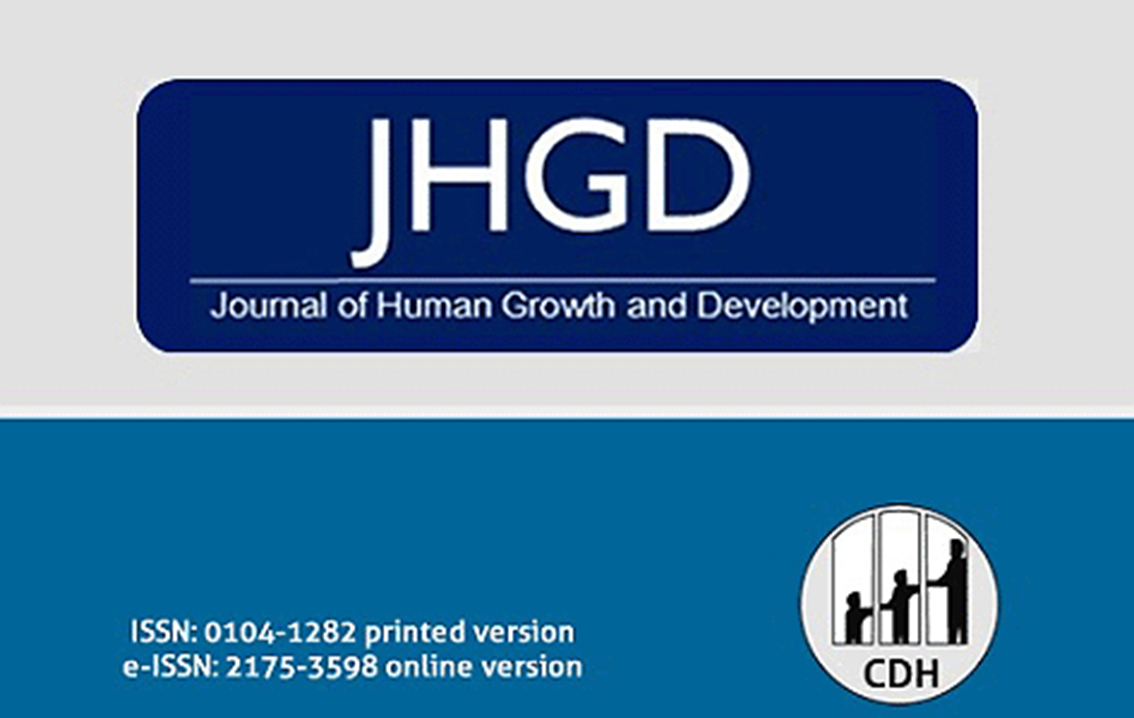Conicity index: an anthropometric indicator of abdominal obesity
DOI:
https://doi.org/10.36311/jhgd.v32.13845Keywords:
abdominal obesity, noncommunicable disease, anthropometryAbstract
The Brazil, as well as the world, is in a transition process, with changes in the nutritional, epidemiological and lifestyle profiles. At the same time, a progressive increase in life expectancy and the growth of chronic non-communicable diseases (NCDs) have been observed in recent decades. Among them are cardiovascular diseases whose main risk factor is obesity. In this scenario, anthropometric indicators are essential for the early identification of obesity, especially obesity accumulated in the abdominal region. The conicity index is one of the recommended tools for identifying the distribution of body fat, as it is associated with cardiovascular and metabolic complications in the population, especially in individuals with NCDs. Therefore, the use of the anthropometric indicator as a screening tool both in primary care and in epidemiological studies is recommended for the early identification of abdominal obesity.
Downloads
References
World Health Organization (WHO). World Health Statistics 2012. Available at: https://ncdportal.org/CountryProfile/GHE110/Brazil. Acess on: Oct 6, 2022.
Williams J, Allen L, Wickrmasinghe K, Mikkelsen K, Roberts N, Townsend N. A systematic review of associations between non-communicable diseases and socioeconomic status within low- and lower-middle-income countries. J Glob Health 2018; 8 (2): 020409. DOI: 10.7189/jogh.08.020409
Valdez R. A simple model-based index of abdominal adiposity. J Clin Epidemiol 1991; 44 (9): 955-6.
Cordeiro AC, Qureshi AR, Stenvinkel P, Heimburger O, Axelsson J, Baany P, et al. Abdominal fat deposition is associated with increased inflammation, protein-energy wasting and worse outcome in patients undergoing haemodialysis. Nephrol Dial Transplant 2010; 25: 568-8. DOI: 10.1093/ndt/gfp492
Pitanga FJG, Lessa I. Anthropometric Indexes of Obesity as an Instrument of Screening for High Coronary Risk in Adults in the City of Salvador – Bahia. Arq Bras Cardiol 2005; 85 (1): 26-31. DOI: 10.1590/s0066-782x2005001400006
Almeida RT, Almeida MMG, Araújo TM. Abdominal Obesity and Cardiovascular Risk: Performance of Anthropometric Indexes in Women. Arq Bras Cardio 2009; 92 (5): 345-50. DOI: 10.1590/s0066-782x2009000500007
Adegoke O, Ozoh OB, Odeniyi IA, Bello BT, Akinkugbe AO, Ojo OO, et al. Prevalence of obesity and an interrogation of the correlation between anthropometric índices and blood pressures in urban Lagos, Nigeria. Sci Rep 2021; 11 (1):3522. DOI: 10.1038/s41598-021-83055-w
Roriz AKC, Passos LCS, Oliveira CC, Eickemberg M, Moreira PA, Sampaio LR. Evaluation of the accuracy of anthropometric clinical indicators of visceral fat in adults and elderly. Plos One 2014; 9 (7):e103499. DOI: 10.1038/s41598-021-83055-w
Conley MM, McFarlane CM, Johnson DW, Kelly JT, Campbell KL, MacLaughlin HL. Interventions for weight loss in people with chronic kidney disease who are overweight or obese. Cochrane Database Syst Rev 2021; 30 (3):CD013119. DOI: 10.1002/14651858.CD013119.pub2
Wu S, An S, Li W, Lichtenstein AH, Gao J, Kris-Etherton PM. Association of trajectory of cardiovascular health score and incident cardiovascular disease. Jama Netw Open 2019; 2 (5):e194758. DOI: 10.1001/jamanetworkopen.2019.4758
Beberashvili I, Azar A, Hamad RA, Sinuani I, Feldman L, Maliar A, et al. Abdominal obesity in normal weight versus overweight and obese hemodialysis patients: Associations with nutrition, inflammation, muscle strength, and quality of life. Nutrition 2019; 59:7-13. DOI: 10.1016/j.nut.2018.08.002
Ikizler, TA, Burrowes JD, Byham-Gray LD, Campbell KL, Carrero JJ, Chan W, et al. Kdoqi Clinical practice guideline for nutrition in CKD: 2020 update. Am J Kidney Dis 2020; 76 (3):S1-107. DOI: 10.1053/j.ajkd.2020.05.006
Yeganehjoo M, Byham-Gray L, Brody R. Associations between body mass index, waist to hip ratio and conicity index, among individual on maintenance hemodialysis. Am J Kidney Dis 2022: s77.
Downloads
Published
Issue
Section
License
Copyright (c) 2022 Salaroli LB, Martins CA

This work is licensed under a Creative Commons Attribution 4.0 International License.






